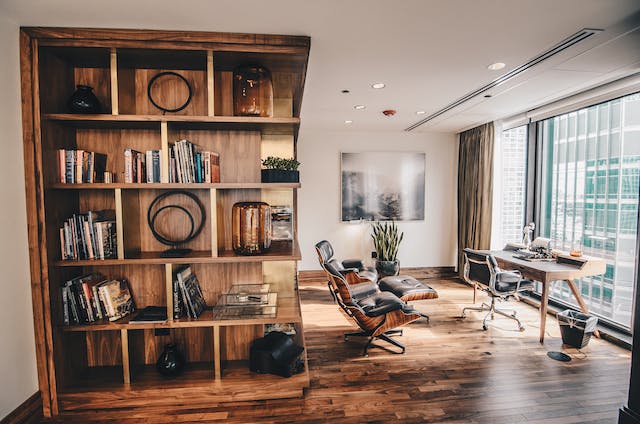The modern workspace has undergone a paradigm shift in recent years, with a growing emphasis on creating environments that foster creativity, collaboration, and productivity. At the forefront of this transformation is the evolution of office furniture and table designs. This deep dive into innovative office furniture and table designs explores how these elements play a pivotal role in shaping the contemporary work environment.

Office Furniture: Beyond Functionality
Gone are the days when office furniture was merely functional. Today, it is recognized as a crucial element in shaping the overall ambiance of a workspace. The shift towards more ergonomic designs is a testament to the realization that employee well-being directly influences productivity. Ergonomic chairs, for instance, are designed to provide optimal support to the human body, reducing the risk of discomfort and musculoskeletal issues associated with prolonged sitting.
Collaborative Spaces: Breaking Down Walls
Traditional cubicles and closed offices are giving way to open, collaborative workspaces. Office furniture plays a pivotal role in shaping these environments. Modular furniture designs, such as flexible desks and mobile partitions, allow for easy reconfiguration of spaces to accommodate different collaborative needs. These designs encourage communication and idea-sharing among team members, fostering a dynamic and inclusive work culture. Additionally, incorporating elements like a square table can further enhance collaboration, providing a central gathering point for discussions and brainstorming sessions.
Height-Adjustable Desks: Adapting to Individual Needs
The rise of remote work has underscored the importance of adaptable and flexible office furniture. Height-adjustable desks have gained popularity as they cater to the diverse needs of employees. These desks enable users to switch between sitting and standing positions, promoting better posture and reducing the health risks associated with prolonged sitting. Integrating technology, some designs even allow users to preset their preferred height levels for a personalized experience. While height-adjustable desks can offer great benefits, their installation often requires precise assembly to ensure stability and proper functioning. A skilled handyman can make the setup process seamless, saving time and preventing potential issues with misaligned parts. Searching online for terms like “handyman near me in Saline” or similar can help one find the right professional to handle the job with ease.
Biophilic Design: Bringing Nature Indoors
Biophilic design, which incorporates elements of nature into the workspace, has gained traction for its positive impact on employee well-being and productivity. Office furniture is embracing this trend by incorporating natural materials, such as wood and stone, and designs inspired by the natural world. Tables with living plant features, for instance, not only contribute to a visually appealing workspace but also enhance air quality and create a connection to the outdoors.
Smart Furniture: Merging Technology and Design
The integration of technology into office furniture is another revolutionary aspect of modern workspace design. Smart desks equipped with wireless charging capabilities, built-in power outlets, and connectivity options streamline the work process. These designs not only enhance functionality but also contribute to a clutter-free and organized workspace. As the Internet of Things (IoT) continues to evolve, we can expect even more sophisticated and interconnected office furniture designs.
Office Table Design: Form and Function in Harmony
The design of office tables has a profound impact on the functionality and aesthetics of the workspace. Contemporary office table designs prioritize both form and function, recognizing that a well-designed table contributes to a conducive work environment.
Conference Tables: Facilitating Collaboration
In the era of remote collaboration, the importance of well-designed conference tables cannot be overstated. A Modular Conference Table with integrated audio-visual capabilities enables seamless virtual meetings. Designs that accommodate multiple screen setups, wireless connectivity, and easy cable management contribute to a smooth collaborative experience, whether team members are in the same room or spread across the globe.
Hot Desking: Flexibility in Workspace Allocation
Hot desking, where employees do not have assigned desks and can choose their workspace each day, has become a popular trend in modern offices. Office table designs for hot desking environments prioritize flexibility and mobility. Folding and stackable tables, as well as lightweight materials, make it easy to reconfigure spaces quickly. This adaptability supports a more dynamic and collaborative work culture.
Cafeteria and Lounge Tables: Fostering Informal Interactions
Beyond formal workspaces, the design of cafeteria and lounge tables is essential for creating informal areas that encourage spontaneous interactions among employees. Circular tables, communal seating, and the use of vibrant colors contribute to a relaxed atmosphere, fostering creativity and team bonding.
Revolutionizing the modern workspace involves a holistic approach that considers both the physical and psychological aspects of the work environment. Innovative office furniture and table designs play a central role in shaping these environments, promoting employee well-being, collaboration, and productivity. As the nature of work continues to evolve, we can expect to see further advancements in office furniture, driven by a commitment to creating spaces that inspire and support the diverse needs of the modern workforce.
Also read:
Why You Must Keep a Flying Angel Horse in Your Workplace?



